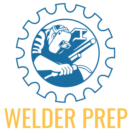The Certified Welding Inspector (CWI) exam consists of three parts, totaling 256 questions.
- Part A: Fundamentals has 150 multiple-choice questions.
- Part B: Practical includes 46 questions.
- Part C: Code Book comprises 60 questions.
Understanding the structure can help candidates allocate study time effectively and approach the exam with confidence.
Understanding the CWI Exam
The Certified Welding Inspector (CWI) exam is an essential certification in the welding industry. It assesses a professional’s ability to inspect and evaluate welding work thoroughly. Administered by the American Welding Society, the exam ensures that certified inspectors possess the knowledge and skills to meet industry standards globally.
The Importance of CWI Certification
Obtaining CWI certification can significantly enhance your career. It validates your expertise and boosts your credibility. Certified inspectors often find better job opportunities and higher salaries. Employers value CWI certification as it assures the quality and safety of welding work, critical in various industries like construction, manufacturing, and aerospace.
Detailed Breakdown of the CWI Exam
The CWI exam is divided into three challenging parts:
- Part A: Fundamentals
- Part B: Practical
- Part C: Code Book
Part A: Fundamentals
Part A focuses on the theoretical aspects of welding. It consists of 150 multiple-choice questions covering:
- Welding Processes: MIG, TIG, SMAW, and FCAW basics.
- Welding Symbols: Understanding and interpreting welding symbols used in drawings.
- Heat Control and Metallurgy: Effects of heat on metal and Proper techniques to minimize distortion.
- Inspection and Testing: Methods of non-destructive testing (NDT) and visual inspection basics.
This section establishes the foundational knowledge needed for a welding inspector.
Part B: Practical
Part B evaluates your hands-on skills. This section includes 46 questions where you will:
- Identify Welding Discontinuities: Distinguish between various types of welding defects and discontinuities.
- Perform Visual Inspections: Use precision tools like fillet weld gauges and calipers.
- Interpret Drawings: Read and understand welding blueprints and shop drawings.
This section is crucial as it tests your ability to apply theoretical knowledge in practical scenarios.
Part C: Code Book
Part C tests your proficiency with a specific welding code book. It includes 60 questions, and you can choose from:
- AWS D1.1 (Structural Welding Code – Steel)
- API 1104 (Welding of Pipelines and Related Facilities)
- ASME Section IX (Welding and Brazing Qualifications)
This section examines your ability to navigate and interpret complex code requirements, essential for adherence to industry standards.
Number of Questions in Each Part of the CWI Exam
Knowing the number of questions helps in strategizing your study plan:
- Part A: Fundamentals – 150 questions
- Part B: Practical – 46 questions
- Part C: Code Book – 60 questions
Each part assesses different aspects of your welding knowledge and skills.
Types of Questions in the CWI Exam
Each part of the CWI exam contains different types of questions. Understanding these can help you prepare more efficiently:
- Multiple-Choice Questions: Predominantly found in Part A, these questions test theoretical knowledge.
- Practical Tasks: Found in Part B, these tasks require hands-on inspection and identification skills.
- Code Interpretation Questions: Part C contains questions that necessitate referencing specific code provisions.
Familiarizing yourself with these question types can improve your exam performance.
Time Allotted for the CWI Exam
Time management is crucial for success in the CWI exam. The exam is conducted in a single day, with each part having a specific time limit:
- Part A: 2 hours to answer 150 questions.
- Part B: 2 hours for 46 practical inspection questions.
- Part C: 2 hours to complete 60 code-related questions.
Efficient utilization of the allotted time ensures you can complete all questions accurately.
Preparation Tips for the CWI Exam
Effective preparation is key to acing the CWI exam. Here are some tips to help you get ready:
Start Early
Begin your preparation several months before the exam. This allows ample time to cover all topics thoroughly.
Use Study Guides
Utilize official AWS study materials and guides. These resources align closely with the exam content.
Practice Regularly
Regular practice is essential. Take sample exams to familiarize yourself with the question format and time constraints.
Join Study Groups
Studying with peers can offer different perspectives and help you retain information better. Join local study groups or online forums.
Attend Workshops
Participate in workshops or courses offered by the AWS. These provide hands-on experience and expert insights.
Manage Your Time
Create a study schedule that allocates specific times for each part of the exam. Stick to your schedule to ensure you cover all necessary material.
Focus on Weak Areas
Identify your weak spots — whether it’s theoretical knowledge, practical skills, or code interpretation — and dedicate extra study time to these areas.
By following these preparation tips, you can increase your chances of success and achieve your CWI certification.
Common Challenges and How to Overcome Them
Candidates preparing for the CWI exam often encounter various challenges. Understanding these challenges and developing strategies to overcome them can significantly impact your success.
Time Management
Balancing study time with professional and personal responsibilities is a common hurdle. Many candidates struggle with allocating enough time to cover all exam materials thoroughly.
How to Overcome:
- Create a Study Schedule: Design a detailed study plan that covers all exam topics and aligns with your daily routine.
- Set Priorities: Focus on more challenging sections first, allowing extra time for weaker areas.
- Use Timers: Practice with timed sessions to simulate exam conditions and improve your efficiency.
Volume of Material
The extensive amount of material to study for the CWI exam can be overwhelming. With topics ranging from welding processes to code interpretation, it is easy to feel inundated.
How to Overcome:
- Break it Down: Divide the material into smaller, manageable sections. This makes studying less daunting and more focused.
- Summarize Key Points: Create summaries of crucial information to reinforce your memory.
- Frequent Reviews: Regularly review previously studied material to retain information better.
Practical Skills
Developing and refining practical inspection skills can be challenging. Practical experience in using inspection tools and identifying welding discontinuities is essential.
How to Overcome:
- Hands-On Practice: Spend time in a workshop or lab to practice using inspection tools and performing visual inspections.
- Seek Mentorship: Learn from experienced welding inspectors to gain insights and tips on practical inspection techniques.
- Recorded Sessions: Record your practice sessions to review and identify areas needing improvement.
Test Anxiety
Test anxiety can hinder your performance during the CWI exam. High stakes and extensive content can contribute to elevated stress levels.
How to Overcome:
- Regular Practice Tests: Familiarize yourself with the exam format through regular practice tests to build confidence.
- Relaxation Techniques: Practice mindfulness, deep breathing, or other relaxation techniques to reduce anxiety.
- Positive Mindset: Maintain a positive attitude and visualize your success to boost confidence.
Importance of Practice Tests
Practice tests are invaluable tools in your CWI exam preparation. They provide numerous benefits that enhance your readiness for the actual exam.
Familiarization
Understanding Question Formats:
- Simulate Exam Conditions: Practice tests mimic the actual exam, helping you get used to the types of questions.
- Identify Patterns: Recognize common question formats and topics, reducing surprises on exam day.
Time Management
Develop Strategies:
- Pace Yourself: Practice tests help you develop strategies to complete questions within the allotted time.
- Efficiency Skills: Improve your efficiency in answering questions quickly and accurately.
Knowledge Testing
Assess Your Understanding:
- Pinpoint Weak Areas: Identify which topics need more attention.
- Self-Evaluation: Evaluate your level of understanding and adjust your study plan accordingly.
Confidence Building
Reduce Exam-Day Anxiety:
- Build Familiarity: Repeated exposure to exam-like conditions reduces anxiety and boosts confidence.
- Practice Success: Achieving high scores in practice tests enhances your self-assurance.
Recommended Study Materials and Resources
Using the right study materials and resources can streamline your CWI exam preparation, making it more efficient and effective.
AWS Study Guides
Official Resources:
- Comprehensive Coverage: These guides cover all exam topics and align with the exam content.
- Structured Learning: Follow a structured approach to studying, ensuring no topics are missed.
Welding Handbooks
In-Depth Knowledge:
- Comprehensive Reference: Use Welding Handbooks – Comprehensive resources covering essential welding topics to dive deeper into complex topics.
- Detailed Explanations: Benefit from detailed explanations and illustrations.
Online Courses
Interactive Learning:
- Flexibility: Access courses at your convenience, fitting study sessions into your schedule.
- Expert Instruction: Learn from experienced professionals who provide insights and practical tips.
Workshops and Seminars
Hands-on Experience:
- Interactive Sessions: Engage in interactive sessions that reinforce theoretical knowledge with practical exercises.
- Real-Time Feedback: Receive immediate feedback from instructors to improve your skills.
Practice Exam Books
Simulated Testing:
- Realistic Questions: Practice with questions that closely resemble those on the actual exam.
- Performance Metrics: Track your progress and identify areas for improvement.
Understanding the Scoring System
Knowing the scoring system helps you set clear goals for your CWI exam preparation. Each part of the exam requires a minimum passing score:
- Part A: Fundamentals – 72%
- Part B: Practical – 72%
- Part C: Code Book – 72%
Setting Clear Goals
Targeted Study:
- Focus on Each Part: Aim to achieve the minimum passing score in each section to secure certification.
- Benchmark Progress: Use practice test scores to measure your readiness and adjust your study strategy.
Re-Take Policy for the CWI Exam
If you do not pass any part of the CWI exam on the first attempt, understanding the retake policy can help you plan your next steps.
Retake Fee
Financial Consideration:
- Additional Cost: Be aware that retaking the exam requires a fee for each section.
Retake Limit
Time Constraints:
- Two Additional Attempts: You have the option to retake the exam up to two more times within a year from your initial test date.
Preparation Time
Enhance Readiness:
- Evaluate and Improve: Use the time between attempts to strengthen weak areas identified during the first attempt.
- Seek Additional Resources: Consider additional study materials or workshops to boost your confidence and knowledge.
If you are ready to take your welding career to the next level, explore our range of certification programs and training services.
Conclusion
The CWI exam is a rigorous assessment that requires thorough preparation. Understanding the structure, using recommended study materials, practicing regularly, and adopting effective strategies can greatly enhance your chances of success. Preparing for this exam not only validates your skills but also opens up new career opportunities in the welding industry.

